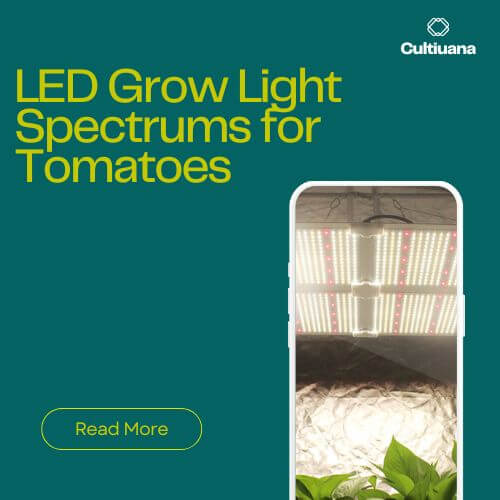
How Much PPFD for Flowering?
Once your plants achieve their ideal vegetative size, what follows in the cultivation cycle?
The next step is to transition them to the flowering stage by altering their light schedule to 12 hours on and 12 hours off, and to increase the intensity of light they receive.
How much should the light intensity be increased at this point?
For early flower maintain PPFD between 700-800, while for complete flowering, adjust it to 1200-1500. You should increase the light intensity by 10-20% over the vegetative stage levels to maintain the Daily Light Integral (DLI).
What changes occur in the plants when the light cycle is shortened?
The reduced lighting period initiates hormonal shifts that lead to flowering. During this stage, can significant growth in plant height be expected?
Yes, it’s common for the plants to double or even quadruple in height during this “stretch” stage of growth.
As plants increase in height, will the PPFD they receive change?
Yes, as plants grow taller, they move closer to the light source, which can naturally increase the PPFD they experience.
What should be done after the plant stretching stage is completed?
After the stretching phase, you can gradually increase the PPFD around 25 µmol m-2 s-1 per day until you reach the ideal light intensity, provided the stretch didn’t already accomplish this.
Is there a consideration regarding plant height before switching to the flowering stage?
Certainly. It’s very important to switch to the flowering before the plants grow too tall, ensuring they fit within your grow space and maintain an optimal distance from the lights, even after the stretching stage.
What is essential about the lighting schedule during the flowering stage?
It is important to strictly stick to the 12-hours-on/12-hours-off lighting cycle throughout the flowering stage, avoiding any light exposure during the dark period.
How should individual growers handle daylight savings time changes during the flowering phase?
Individual growers should not adjust their timers for daylight savings time during the flowering phase. Any changes to the light schedule should be delayed until after the growing cycle is complete to prevent disrupting the plants’ flowering process.
What lesson have we learned from stories about disrupted light schedules during the flowering phase?
The lesson is that changing the light schedules can be critical to flowering plants, which may respond adversely to even slight changes in their lighting regimen.
Why is it risky to adjust the timer during the mid-grow?
Adjusting the timer mid-grow is risky because it can lead to mistakes that may jeopardize the entire harvest due to the plants’ sensitivity to light schedule changes.
How is light management different in commercial grow facilities?
Commercial grow facilities often use sophisticated computer systems to regulate various garden parameters, including lighting, environmental conditions, and irrigation.
What are the advantages of these advanced systems?
These advanced systems allow for precise changes in light schedules, even accommodating daylight savings time shifts with ease. They also offer logging capabilities, enabling growers to confirm and record the changes made, thus ensuring consistency and accuracy in the grow environment.
In both vegetative and flowering stages, how do plants respond to CO2 supplementation?
Plants during the flowering stage, much like in the vegetative stage, show significant benefits from CO2 supplementation. Is CO2 supplementation recommended for all growers?
For commercial indoor growers working with the high light intensities we suggest, CO2 supplementation is essential. For the hobbyist, it should be added if their system supports it.
We will now focus on detailing the PPFD levels for the flowering stage of growth. For completeness, we’ll also include the PPFD values for other growth stages as reference points, although our primary focus is on the flowering stage PPFD.
Here is a table that outlines the optimal PPFD values for each growth stage:
| Growth Stage | Optimal PPFD (µmol m-2 s-1) |
|---|---|
| Mother | 450-600 |
| Clones | 100-125 |
| Seeds | 200-300 |
| Early Veg | 200-300 |
| Late Veg | 450-600 |
| Early Flower | 700-800 |
| Full Flower | 1200-1500 |




